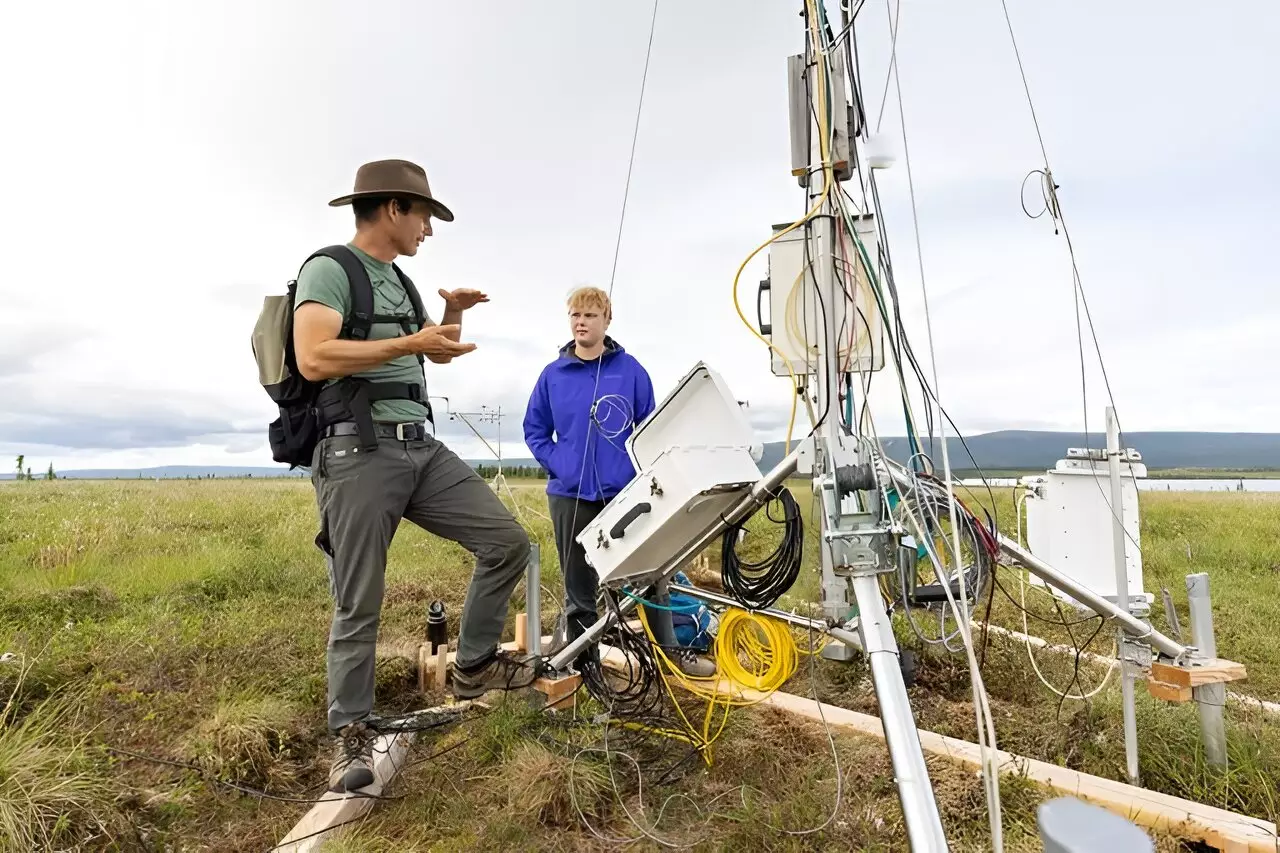In an age where climate change dominates global discourse, the Arctic tundra, particularly its permafrost, emerges as a silent yet formidable player in the game of carbon emissions. Recent research led by Ted Schuur, a distinguished professor of biological sciences at Northern Arizona University, sheds light on the intricate biological processes occurring in these frigid ecosystems, revealing alarming truths about their role in the Earth’s carbon cycle. The significance of this research cannot be overstated; with the northern permafrost region storing roughly one-third of the planet’s soil organic carbon despite comprising only 15% of Earth’s soil area, it stands as a crucial reservoir in the climate change narrative.
The warming of permafrost ecosystems at alarming rates—three to four times faster than the global average—is causing a surge in carbon cycling, prompting further ecosystem respiration. As plants assimilate carbon dioxide through photosynthesis, they help sequester carbon, but the fate of this carbon is precarious. With the increase in temperatures, the permafrost’s stability is waning, leading to accelerated carbon release back into the atmosphere. This paradox highlights not just a regional problem but a potential global crisis, wherein emissions from these thawing reserves could mimic those of an industrialized nation by 2100.
The Oversight in Global Climate Strategy
One of the most perplexing aspects of current climate strategies, particularly those outlined in the Paris Agreement, is the glaring omission of emissions from melting permafrost. As countries strive to meet their agreed targets, they must grapple with an inconvenient truth: the permafrost is likely to contribute an additional 10% to 20% of greenhouse gas emissions in the coming decades, a variable that remains inadequately accounted for in existing frameworks. This oversight necessitates an urgent recalibration of both global goals and national policies aimed at carbon reduction, as continued inaction could result in dire consequences for climate stability.
The research spearheaded by Schuur and his colleagues provides critical insight as they gather data from various sites across the permafrost region. Their analyses, particularly a study published in *Nature Climate Change*, utilize decades of carbon dioxide flux data from both permafrost and non-permafrost ecosystems. This kind of comprehensive analysis is transformative, allowing scientists to understand how rising temperatures lead to increased carbon emissions, particularly in fall and winter when losses exceed summer uptake. This balance of carbon cycling stands as a testament to the vulnerable nature of permafrost ecosystems and the pressing need for a nuanced understanding of their dynamics.
Illuminating the Future with Experimental Insights
The potential repercussions of a warming Arctic are further illuminated in a separate study published in *Nature*. By simulating increased temperatures at tundra sites using miniature greenhouses, researchers discovered that a modest rise of 1.4°C in air temperature and 0.4°C in soil temperature could elevate ecosystem respiration by a staggering 30%. This finding highlights not only the sensitivity of these ecosystems to warming but also the critical role that local environmental factors—such as nutrient and water availability—play in influencing carbon dynamics.
As researchers continue to probe these complex interrelations, we gain invaluable insights that can inform better global and local policies. The lessons learned from these experiments are imperative for preparing for an Arctic climate fueled by escalating temperatures, ensuring that policymakers are armed with the data necessary to address the looming carbon crisis.
Data Collection Challenges in a Changing Political Climate
However, the journey to fully comprehend permafrost dynamics is fraught with challenges. In a recent paper, Schuur and his co-authors raised concerns about the impact of geopolitical tensions, specifically highlighting the loss of access to permafrost sites in Russia due to the invasion of Ukraine. This development is not just a political issue; it has far-reaching implications for research, as the Arctic carbon flux monitoring network relies heavily on data from these regions. The researchers estimate that the absence of this data means losing over half of the landscape variability information in the permafrost, putting substantial limitations on our understanding of global carbon emissions from these areas.
To mitigate this loss, there’s an urgent need to replicate the data collection efforts across North America, although the loss of certain ecosystem analogs remains an enduring challenge. As scientists navigate these complexities, they are left racing against time, collecting data faster than the permafrost can thaw, striving to illuminate the road ahead in climate policy.
The scientific community’s drive to unravel the complexities of permafrost carbon cycling offers hope for a deeper understanding of our planet’s climate systems and illustrates the urgent need for immediate action to address the impending crisis posed by thawing permafrost. By acknowledging these critical factors, we take a vital step towards safeguarding our climate future.


Leave a Reply